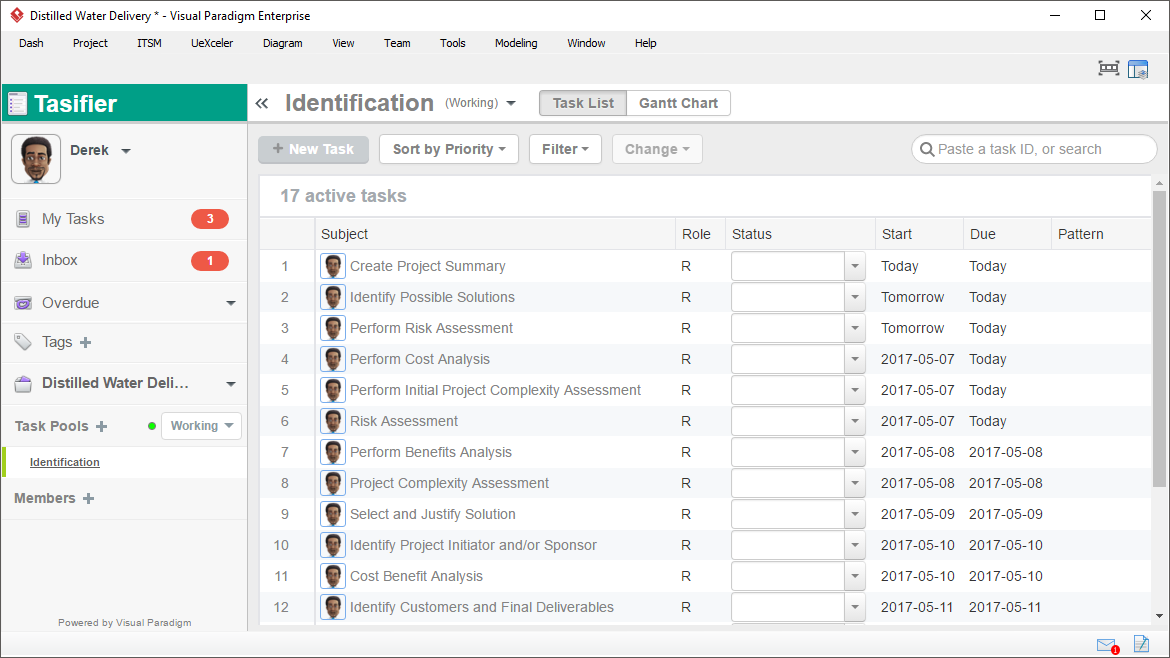A Project Management Office, abbreviated to PMO, a group or department in an enterprise that establishes and implements best practices and maintains standards related to project management, planning and execution. The PMO strives to standardize and introduce economies of repetition in the execution of projects. The PMO also serves as an organization's central hub for project documentation, guidance and success metrics. Most PMO processes, methodologies and best practices are based on industry standards, such as A Guide to the Project Management Body of Knowledge (PMBOK Guide), which was originally published by the Project Management Institute (PMI), a certification body for project managers (PM).

The Role of PMO vs Project Manager
Typically, the PMO defines and maintains standards of project management within the organization through the standardization and the execution of repeatable and scalable processes. The PMO is also the source of documentation, guidance and metrics regarding the practice of project management and execution. Whereas the role of the PM is to adhere to the guidelines and practices standardized by the PMO during project planning, preparation, and execution.
The project manager manages the constraints (scope, schedule, cost, quality, etc.) of the individual projects, while the PMO manages the methodologies, standards, over all risks/opportunities, metrics, and interdependence among projects at the enterprise level. They actually operate on different levels. While a project manager is accountable for achieving the goals approved for their projects they are responsible, a PMO is accountable for achieving the approved goals for the enterprise.
Project Management Automated Software – Save Cost and Ensure Quality!
Not only cost a lot to hire a good project manager, but also need a long running-in period which is not feasible, particularly for irregular projects for to be required in a many different small units scattered an organization. Perhaps, an automated good Project Management tool may be more desirable in the following scenario to overcome the project management challenges:
- Hard to get project started and well managed. It involves a lots of upfront investment, trainings and additional resources.
- Staff do not have the confident or enough maturity to properly kick start business project initiatives.
- The deliverables of the IT projects didn't align with business goal and objectives.
- As a result, the proliferation of many different but isolated and ad-hoc initiatives are developed randomly without following any guidelines, standards or procedures.
- Produce the deliverables required by a standard is often tedious and very time consuming.
- One-size-fit-all solution, process, tool or software is often not efficient for dealing with different sizes or complexities of projects.
What Visual Paradigm Automated Project Management Tool can help?
Now your team can kick-start any size of IT projects easily with our automated guide-through process that embedded step-by-step instructions, input references and samples and develop deliverables incrementally and collaboratively with your team members. Visual Paradigm can significantly enhance and streamline the entire process and allowing your term work collaboratively and effectively with automated task management and notifications with task manager in both desktop and/or over the cloud environment.
- Visual Paradigm's s unique Guide-Through Process provides all the instructions, samples, steps, input references for performing analysis, and incrementally developing, classifying and achieving deliverables automatically in a documentation repository.
- The Guide-Through Process provides step-by-step path for you to navigate back and forth within each development phase and to traverse around different phases using the process navigator. The progress indicator let you know exactly where you are and what need to be done in the next steps.
- Follow the well tested project management process (compatible with PMBOK®, PRINCE and ITIL) with easy visual modeling language support, enables stakeholders from different domains (project owner, business analyst, enterprise architect and IT professionals) to collaborate easily and effectively.
- Follow the auto guide-through process, all the information filled, diagrams drawn and analysis performed will be summarized into nicely formatted deliverables.
- Project Management Guide-Through include an "Identification" phase to determine a project's complexity for adopting the most suitable process scheme.
Key Features of Project Management Tool
Project Management Lifecycle Navigator lets you traverse around development phases easily. Each of these phases incorporate project management best practices and heuristics for your team to follow, and obtain the best result and ROI to fulfill the goals, objectives and strategies of IT projects.
Each of the project phase consists of a set of activities, and each activity consists of a set of steps required to perform. Detailed instructions, samples and project management tools required are embedded inside these activities, so that your team can focus on the real work instead of frequently referring back to any standard manual and procedures. Progress indicators are provided to reflect the progress and status of work.
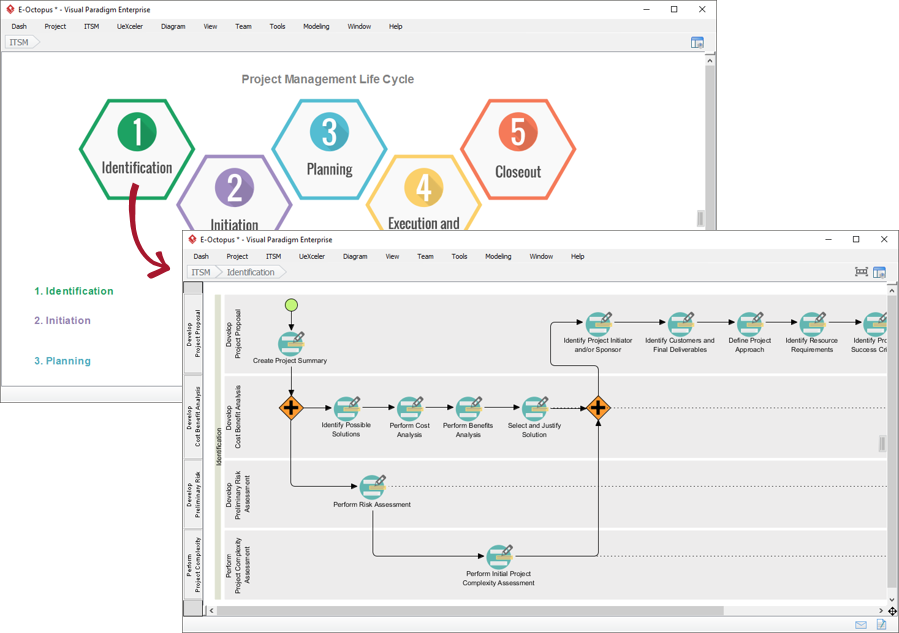
Embedded Instructions, Samples and Form-Filling Deliverables
Instructions and samples are embedded right within the project management activities that you are going to perform, saving your time from searching around the Internet for what it is and what has to be done
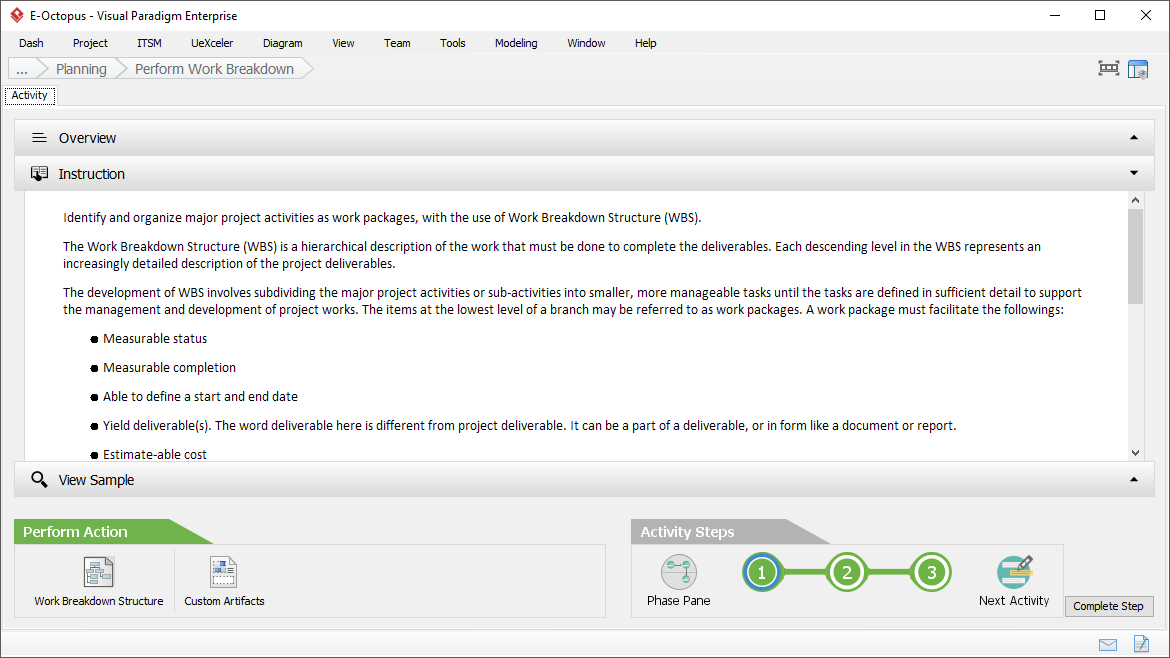
The project management toolset provides out-of-the-box deliverables templates which are associated with the pre-defined work items and forms. Simply perform the analysis and fill-in the forms. The information collected in the form you filled in, will be consolidated incrementally for generating the project deliverables.
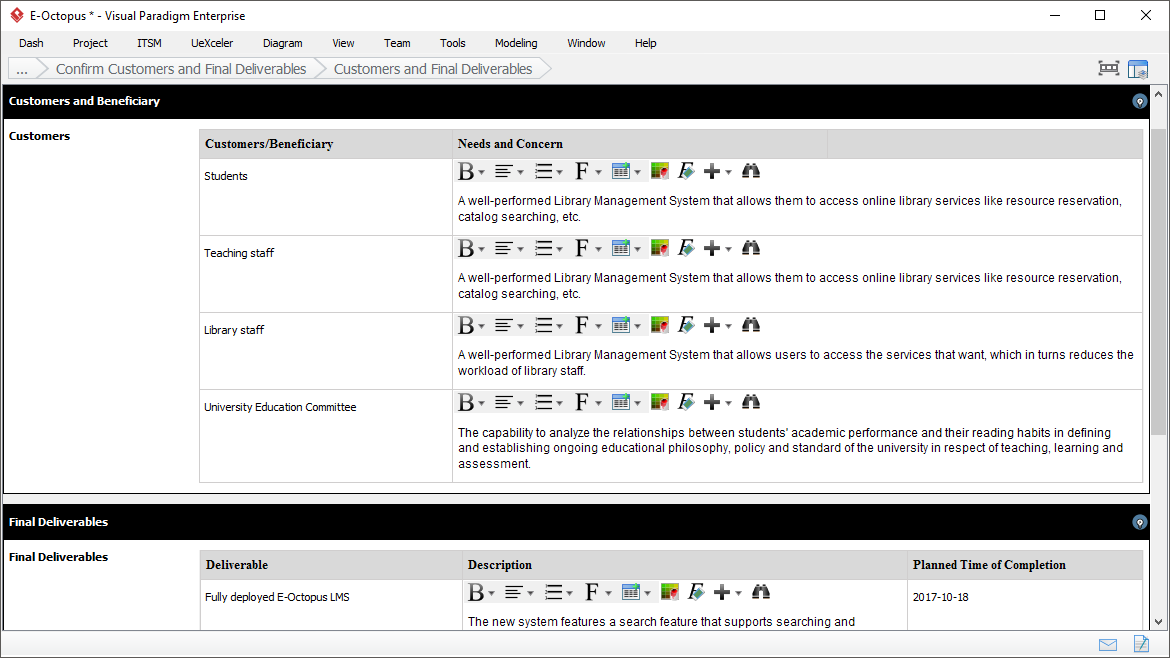
Essential Build-in Project Management Toolset
Besides form filling, the project management toolset also features a set of project management diagrams and tools like Organization Chart, Work Breakdown Structure, BPD, PERT Chart, RACI Chart, and etc. These tools are seamlessly integrated with the project management lifecycle, enabling you to visualize ideas in forms of diagrams.
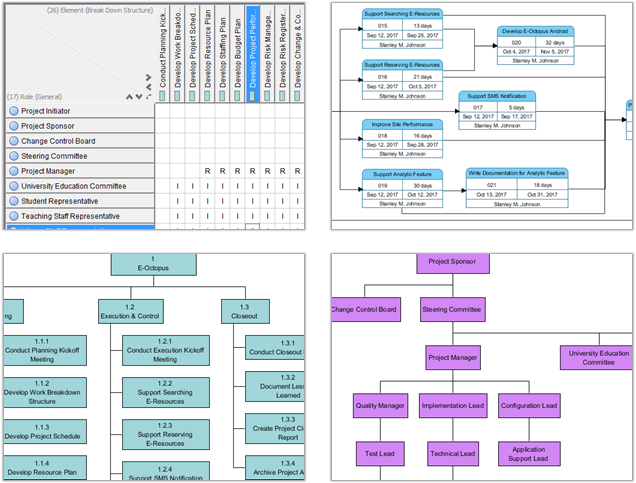
Four Process Schemes that Fits Different Project Complexity
The Identification phase is one of the five development phases in the project management process which is used to determine the complexity of a project. The project management tool provides you with four levels of process schemes (aka. Project Management Scheme), so that you will never be bound by a one-size-fit-all solution.
The following are the Complexity Factors used for classifying a project in one of the four complexity level.
| Summary of complexity factors: | Project Score | Range of Maximum Weight Points Possible | |||
|---|---|---|---|---|---|
| Basic | Low | Medium | High | ||
| Costs, funding, and budget | 70 | 18 | 40 | 62 | 92 |
| Project team attributes and personnel commitment | 43 | 11 | 21 | 42 | 70 |
| Scheduling, dependencies and duration | 22 | 8 | 16 | 26 | 40 |
| Project impacts | 38 | 4 | 20 | 36 | 60 |
| Novelty of solution | 24 | 5 | 10 | 17 | 24 |
| Degree of end user involvement | 14 | 2 | 8 | 14 | 24 |
| Data conversion need | 6 | 0 | 4 | 6 | 8 |
| Total | 216 | 48 | 119 | 203 | 318 |
The table below lists the deliverable available under the various process schemes.
Phase: Identification Phase
| Basic | Low | Medium | High | |
|---|---|---|---|---|
| Project Proposal | ✔ | ✔ | ✔ | ✔ |
| Cost Benefit Analysis | ✔ | ✔ | ✔ | ✔ |
| Risk Assessment | ✔ | ✔ | ✔ | ✔ |
| Project Complexity Assessment | ✔ | ✔ | ✔ | ✔ |
Phase: Initiation Phase
| Basic | Low | Medium | High | |
|---|---|---|---|---|
| Project Charter | ✔ | ✔ | ✔ | ✔ |
| Project Complexity Assessment (Revised) | ✔ | ✔ | ✔ | ✔ |
Phase: Planning Phase
| Basic | Low | Medium | High | |
|---|---|---|---|---|
| Project Plan | ✔ | ✔ | ✔ | ✔ |
| Work Breakdown Structure | ✔ | ✔ | ✔ | ✔ |
| Project Schedule | ✔ | ✔ | ✔ | ✔ |
| Resource Plan | ✔ | |||
| Staffing Plan | ✔ | |||
| Budget Plan | ✔ | ✔ | ✔ | |
| Project Performance Plan | ✔ | ✔ | ✔ | |
| Risk Management Plan | ✔ | ✔ | ✔ | |
| Risk Register | ✔ | ✔ | ✔ | |
| Change and Configuration Management Plan | ✔ | ✔ | ||
| Procurement Plan | ✔ | ✔ | ✔ | |
| Communication Plan | ✔ | ✔ | ✔ | |
| Quality and IV&V Plan | ✔ | ✔ | ✔ |
Phase: Execution and Control Phase
| Basic | Low | Medium | High | |
|---|---|---|---|---|
| Status Report | ✔ | ✔ | ✔ | ✔ |
| Meeting Agenda | ✔ | ✔ | ✔ | ✔ |
| Meeting Minutes | ✔ | ✔ | ✔ | ✔ |
| Procurement Log | ✔ | ✔ | ✔ | ✔ |
| Risks register | ✔ | ✔ | ✔ | |
| Issues Log | ✔ | ✔ | ✔ | |
| Change Control Request | ✔ | |||
| Change Request Log | ✔ | |||
| User Acceptance Report | ✔ | ✔ | ✔ |
Phase: Closeout Phase
| Basic | Low | Medium | High | |
|---|---|---|---|---|
| Lessons Learned | ✔ | ✔ | ✔ | ✔ |
| Project Closeout Report | ✔ | ✔ | ✔ |
Deliverables Auto-Archived
As you progresses phase by phase and works have been done step-by-step incrementally, the information will be collected from your work in background in forming different project management documents, known as deliverables. All these deliverables will be generated, versioned and archived in a well categorized visual File Cabinet.
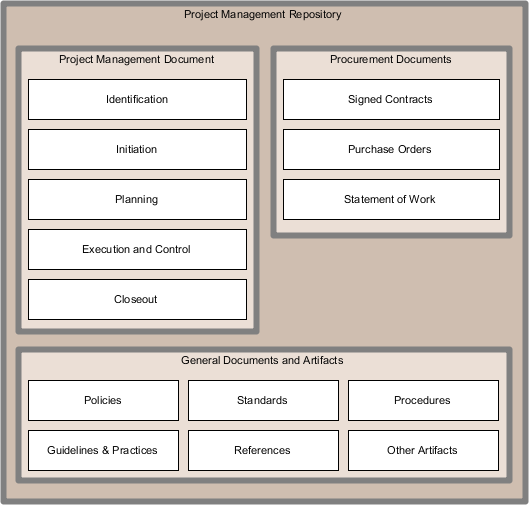
Workflow Management for Process Activities
Work collaboratively by dispatching process activities as tasks to different stakeholders, through Tasifier, the Task Management tool. You can set the start and due date, instructions and add attachment to the tasks, keep monitoring the progress of work with Gantt chart, etc.
